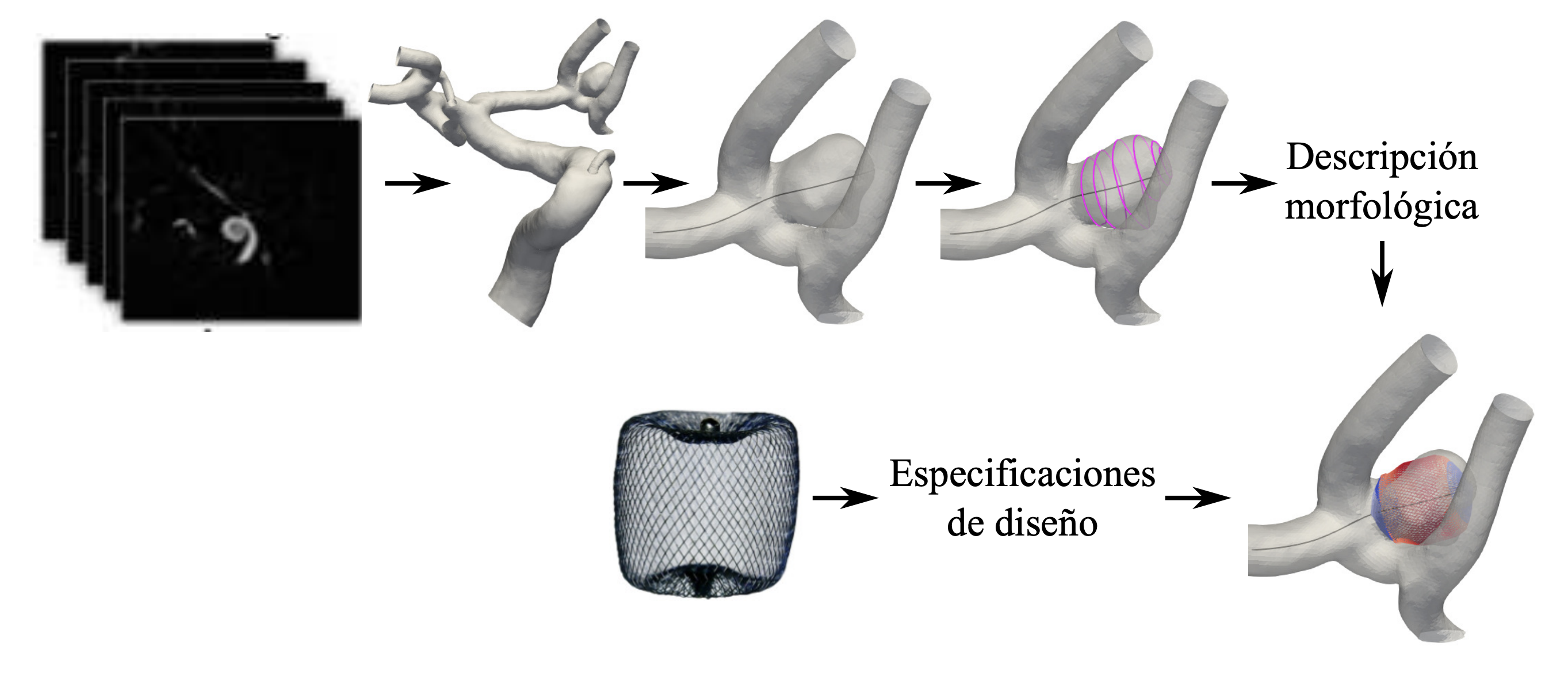Modelos de simulación de dispositivos intrasaculares para el tratamiento de aneurismas intracraneales
posted on March 4, 2022
Podés acceder al documento de la tesis desde este link.

Resumen
Intracranial aneurysms are pathological dilations of the cerebral arteries that arise from weakening the arterial wall. The constant interaction of this weakened wall with blood flow causes its bulging and subsequent growth. The greatest danger of this progressive growth of the aneurysm is its rupture, which generates a haemorrhage with high mortality and morbidity rates. The high risk involved in the aneurysm rupture means that they are treated to avoid rupture when detected. Endovascular treatment allows the aneurysm to be occluded from within the artery using minimally invasive procedures. Coils, stents, flow diverters, and intrasacular devices are devices developed for this treatment type. One difficulty that interventionists often face is the appropriate selection of the device to use. Computational techniques to simulate the implantation of these devices were developed to respond to this problem, offering predictive tools for the outcome of specific treatments. In this thesis, the development of a computational method for the simulation of intrasacular devices, which, unlike the rest, has not been widely studied, is presented. Aimed at facilitating the selection of the appropriate size for each aneurysm, the technique allows the simulation of different device sizes within the aneurysm to analyze which one would offer the best fit of the device to the patient anatomy.